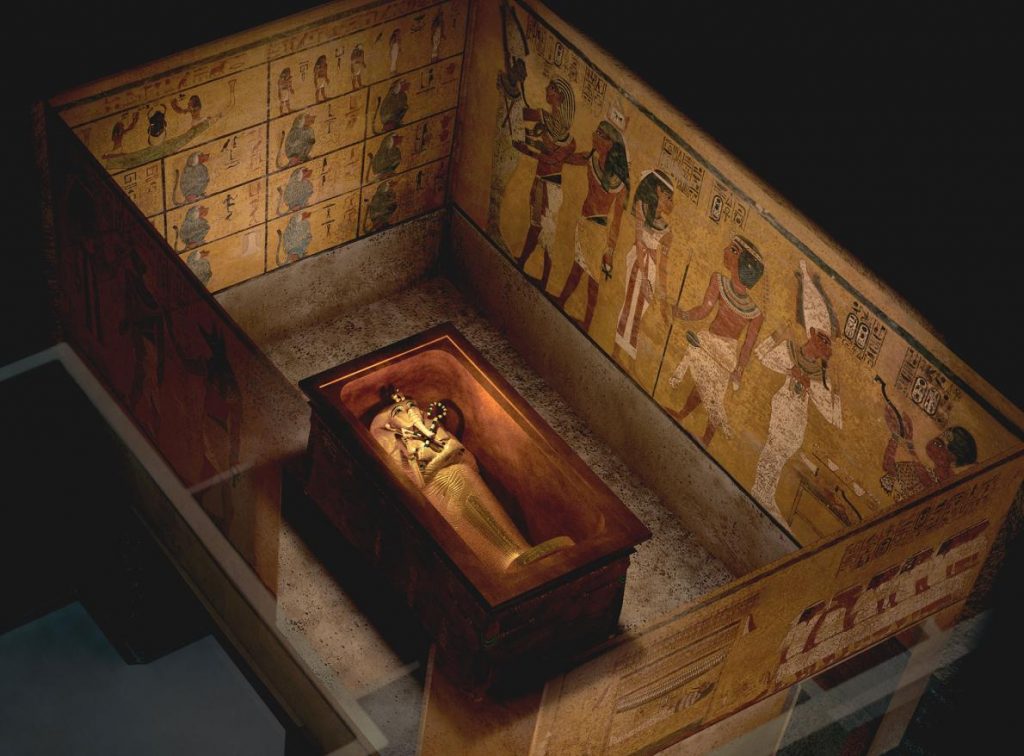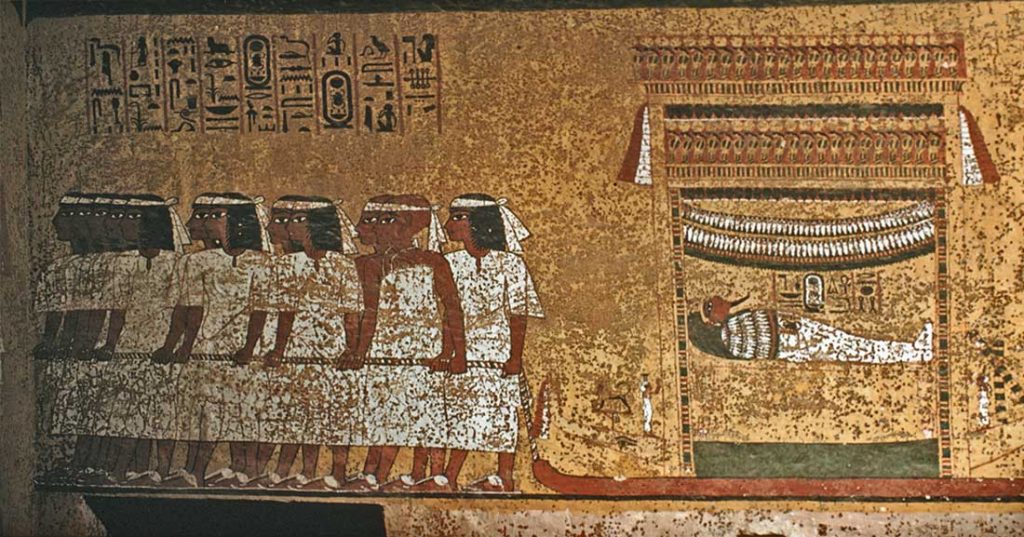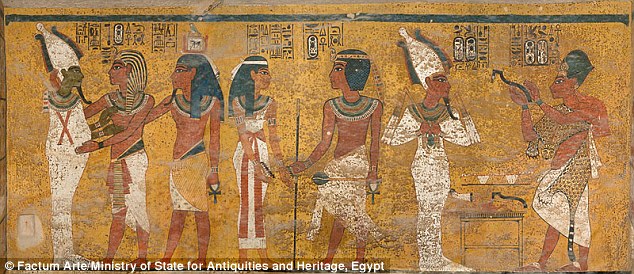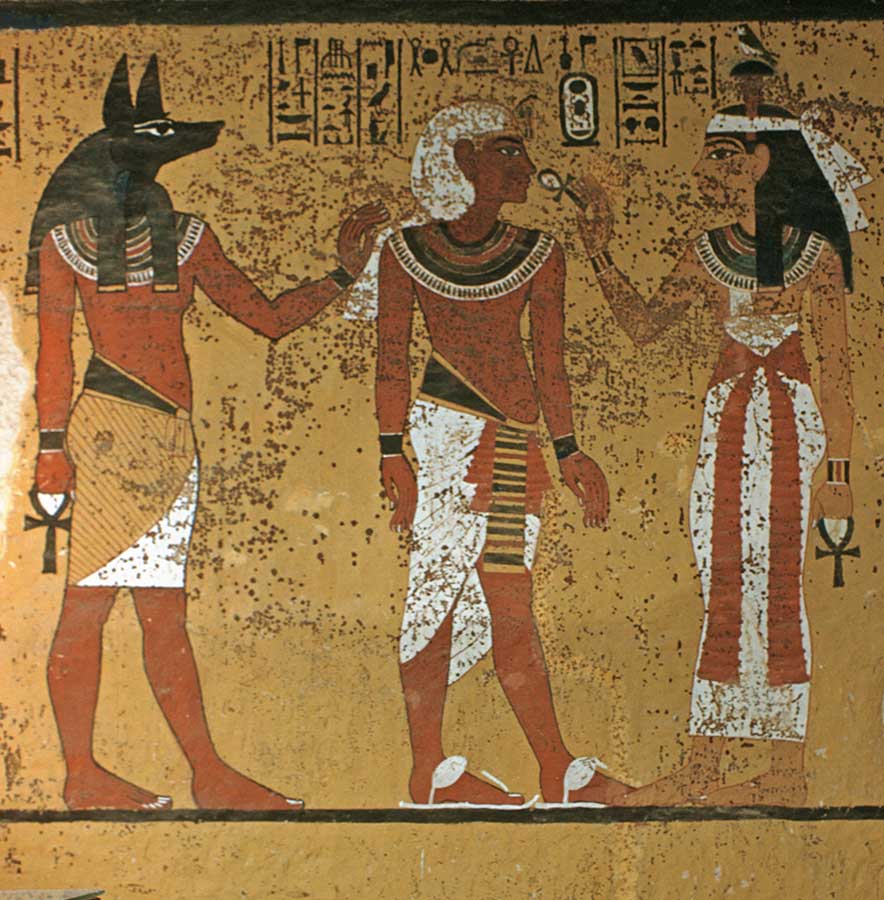The tomb of Tutankhmun is more than a mask, a mummy, Howard Carter… It is an historical document with lots of useful information about the funerary belief in Ancient Egypt. Let’s focus now on the funerary chamber.

Funerary Chamber of Tutankhmun. Image: National Geographic.
The decoration of the funerary chamber.
The funerary chamber of Tutankhmun is the only decorated room in the tomb. The decorative program is not the typical one for a royal burial in Ancient Egypt. Starting from right to left, we find a secuence of images with contains a logic.
East Wall.

Funerary cortege of Tutankhamun. Image: www.osirisnet.net
On the East wall the funerary cortege is dragging the mummy of Tutankhmun on his sledge to the tomb. That is, Tutankhamun is being taken to the world of the dead; he is facing the first moment of the death in Ancient Egypt.
North Wall.
On the North Wall, he Egyptan artists depicted, on one hand, the Opening of The Mouth ceremony on the corpse of the king as Osiris. Onthe other hand Tutankhamun, as living king, is being received by the goddess Nut and embracing the image of Osiris, the god of the dead. In both cases we are facing the first mythical/funerary moment of Ancient Egypt, in which the dead is at the doors of the Hereafter and meets the deities related to it. It is the first moment of the death.

North Wall of Tutankhmun. Image: www.dailymail.co.uk
West Wall.
On the West wall, the is an abbreviated form of the first hour of the Amdouat. In the belief of Ancient Egypt, the sun made each night a journey through the Amdouat, where he joined together with Osiris and got the force for his resurrection the following day. This scene on the West wall represents again then the first moment of the death, when the mummy gets into the Underworld for reviving after the complete regeneration process.
South Wall.

South Wall of Tutankhmun’s tomb. Image: www.osirisnet.net
Finally, on the South wall, Tutankhamun appears in the company of Anubis, the god of the mummification and protector of the necropolis, and Hathor, the goddess which receives the deads at the edge of the West mountain, that is the cemetery. Behind that there is an image of Isis. In Ancient Egypt, this goddess with Nephthys, was in charge of giving back the vital faculties to the corpsejjust before the eternal life.. So, on the South wall, again the decoration evocates the moment in which Tutankhamun enters into the world of the dead.
Conclusion.
Summing up, the decoration of the funerary chamber of Tutankhamun depicts the transition moment of the dead in Ancien Egypt. It is the first moment of the death, when the mummy gets into the darkness of the Underworld and start the ceremonies for his final resurrection.
Trackbacks/Pingbacks